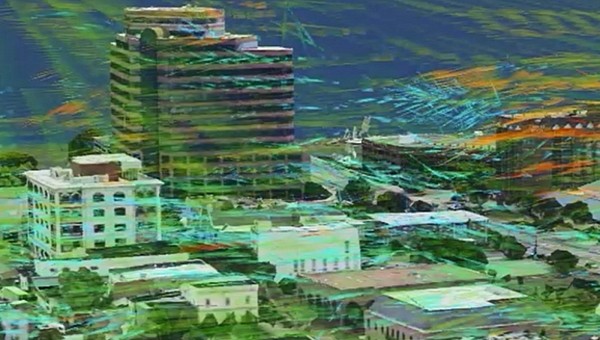We were impressed by many cargo drones, air taxis, and even flying cars, over the past few years, but now the focus has shifted to the complex mobility system that’s going to bring them all together. We may have the vehicles (inches closer to formal certification) but we need the infrastructure. Dedicated areas for take-off and landing (vertiports), air traffic management tools, ground control stations, and, last but not least, weather infrastructure.
If even the mightiest, most technologically-advanced fighter jets can be negatively impacted by something as common as rain, imagine what harsher weather factors can do to small, unmanned aircraft carrying cargo, or to the medium-sized eVTOLs (electric vertical take-off and landing) gearing up for air commuting operations.
Even with the best vertiports in place, drone and air taxi operations can be derailed by anything from wind and fog to heavy storms, if there’s one thing missing, and that is a weather sensor.
These types of weather sensors, placed strategically in areas with a high risk of weather hazards, could make drone operations much more effective, and support a broadening of the AAM (Advanced Air Mobility) sector in this way.
But in order to even get to that part, precise weather data must first be collected and analyzed. This is the goal of a new collaborative project, launched by a weather tech company and a nonprofit organization dedicated to air mobility.
AeroX brings together industry players, government officials, and community partners, with the goal of advancing AAM, and it does so in a very fitting location - Winston-Salem and Forsyth County, North Carolina.
North Carolina has participated in a three-year Integration Pilot Program (IPP) for UAS (unmanned aircraft systems) organized by FAA (the Federal Aviation Agency), where it achieved an impressive number of premieres in the field. The most notable one was North America’s first unmanned passenger aircraft flight, but there were many others related to drone delivery as well.
Now, AeroX is taking the next step by working with TruWeather Solutions on a pioneering weather study connected to AAM, in North Carolina.
This complex study will map out low-altitude weather conditions all across the state, to identify the areas with increased risks of weather hazards. Then, with the help of TruWeather Solution’s software, this data will be used to determine the best locations for future weather sensors. The final step will be to actually start purchasing and deploying these sensors at those exact locations.
In the end, this is yet another factor that can help drone delivery services and future air taxi operations more efficient and also cost-effective. In fact, as this study intends to show, it might be a critical one. Knowing the potential risks and addressing them head-on is always the best way to go.
Even with the best vertiports in place, drone and air taxi operations can be derailed by anything from wind and fog to heavy storms, if there’s one thing missing, and that is a weather sensor.
These types of weather sensors, placed strategically in areas with a high risk of weather hazards, could make drone operations much more effective, and support a broadening of the AAM (Advanced Air Mobility) sector in this way.
But in order to even get to that part, precise weather data must first be collected and analyzed. This is the goal of a new collaborative project, launched by a weather tech company and a nonprofit organization dedicated to air mobility.
AeroX brings together industry players, government officials, and community partners, with the goal of advancing AAM, and it does so in a very fitting location - Winston-Salem and Forsyth County, North Carolina.
North Carolina has participated in a three-year Integration Pilot Program (IPP) for UAS (unmanned aircraft systems) organized by FAA (the Federal Aviation Agency), where it achieved an impressive number of premieres in the field. The most notable one was North America’s first unmanned passenger aircraft flight, but there were many others related to drone delivery as well.
Now, AeroX is taking the next step by working with TruWeather Solutions on a pioneering weather study connected to AAM, in North Carolina.
This complex study will map out low-altitude weather conditions all across the state, to identify the areas with increased risks of weather hazards. Then, with the help of TruWeather Solution’s software, this data will be used to determine the best locations for future weather sensors. The final step will be to actually start purchasing and deploying these sensors at those exact locations.
In the end, this is yet another factor that can help drone delivery services and future air taxi operations more efficient and also cost-effective. In fact, as this study intends to show, it might be a critical one. Knowing the potential risks and addressing them head-on is always the best way to go.






